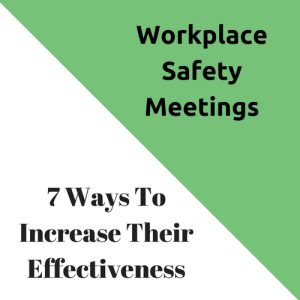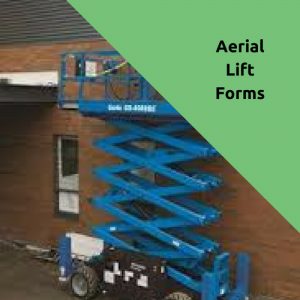Hazard Communication Program – Example
 According to OSHA, the purpose of the Hazard Communication Standard is “to ensure that the hazards of all chemicals produced or imported are evaluated and details regarding their hazards are transmitted to employers and employees.” The purpose behind the HAZCOM standard is that employers and employees have the right to know the hazards and identities of the chemicals they are exposed to and what precautions can be taken to protect themselves.
According to OSHA, the purpose of the Hazard Communication Standard is “to ensure that the hazards of all chemicals produced or imported are evaluated and details regarding their hazards are transmitted to employers and employees.” The purpose behind the HAZCOM standard is that employers and employees have the right to know the hazards and identities of the chemicals they are exposed to and what precautions can be taken to protect themselves.
All companies have a requirement to comply with the HAZCOM standard, even if it is as simple as using cleaning chemicals.
Categories within the OSHA Hazard Communication Standard:
Hazard Classification
The first category, Hazard Classification (29 Code of Federal Regulations (CFR) 1910.1200 (d)) requires chemical manufacturers and importers to evaluate the chemicals produced in their workplaces or imported by them to determine the hazard classes, and, where appropriate, the category of each class. Mandatory classification considerations are given in 29 CFR 1910.1200 Appendix A (Health Hazard Criteria) and Appendix B (Physical Criteria).
Written HazCom Program
The second category is the Written Hazard Communication Program (29 CFR 1910.1200(e)). It requires employers to fully document the actions taken to comply with all of the provisions of the Hazard Communication Standard and to list the responsible person(s) for each area of the program. A copy of the written program must be made available, upon request, to all employees and OSHA officials.
Check Out: Hazard Communication Plan Explained
Labels and other Forms of Warning
The third category, Labels and other Forms of Warning (29 CFR 1910.1200(f)), requires chemical manufacturers, importers or distributors to ensure that each container of hazardous chemicals leaving their workplace is labeled, tagged or marked to GHS standards.
The GHS is a global hazard communication system developed by the UN that standardizes the way hazardous chemicals are classified and then communicated via safety data sheets and labels.
 GHS compliant labels now have six standardized elements:
GHS compliant labels now have six standardized elements:
- product identifier,
- signal word,
- precautionary statements,
- hazard statements,
- manufacturer information,
- pictograms.
Safety Data Sheets
The fourth category, Safety Data Sheets (SDSs) (29 CFR 1910.1200(g)) requires that chemical manufacturers, importers or distributors provide SDSs for each hazardous chemical to downstream users to communicate information on the hazards. All of the information on the SDS must be in English and be available to employees working with or near the hazardous chemical. SDSs are now presented in a consistent user-friendly, 16-section format.
Sections of a SDS explained:
- Identification includes product identifier; manufacturer or distributor name, address, phone number; emergency phone number; recommended use; restriction on use.
- Hazard Identification includes all hazards regarding the chemical; required label elements.
- Composition information on ingredients include information on chemical ingredients; trade secret claims.
- First-aid measures include important symptoms/effects acute, delayed; and required treatment.
- Fire-fighting measures list suitable extinguishing techniques, equipment; and chemical hazards from fire.
- Accidental release measures list emergency procedures, protective equipment; proper methods of containment and cleanup.
- Handling and storage lists precautions for safe handling and storage, including incompatibilities.
- Exposure controls/personal protection list OSHA’s Permissible Exposure Limits (PELs); Threshold Limit Values (TLVs); appropriate engineering controls; and personal protective equipment.
- Physical and chemical properties list the chemical’s characteristics.
- Stability and reactivity list chemical stability and possible hazardous reactions.
- Toxicological information includes routes of exposure; related symptoms, acute and chronic effects and numerical measures of toxicity.
- Ecological information provides information to evaluate the environmental impact of the chemical(s) if it were released to the environment.
- Disposal considerations provide guidance on proper disposal practices, recycling or reclamation of the chemical or its container and safe handling practices.
- Transport information provides guidance on classification information for shipping and transporting of hazardous chemicals by road, air, rail or sea.
- Regulatory information provides guidance on classification information for shipping and transporting of hazardous chemicals by road, air, rail or sea.
- Other information includes the date of preparation or last revision.
Check Out How to Read an SDS Sheet for more information
Employee Information and Training
The fifth category, Employee Information and Training (29 CFR 1910.1200(h)), requires employers to provide employees with effective information and training on hazardous chemicals in their work area at the time of their initial assignment and whenever a new physical or health hazard is introduced into the area. The training must include methods and observations used to detect the presence or release of the chemical, physical and health hazards, protective measures, labeling and explanation of the SDS.
The OSHA Hazard Communication Standard, also known as HazCom, 29 CFR 1910.1200, is a U.S. regulation that governs the evaluation and communication of hazards associated with chemicals in the workplace.
Download & view the Hazard Communication Program – Example below
Hazard Communication Program - example









 Have you ever wished your workplace safety meetings were more interesting, more engaging, more productive, and more rewarding?
Have you ever wished your workplace safety meetings were more interesting, more engaging, more productive, and more rewarding?
 Aerial lifts, often called scissor lifts, are powered and mobile platforms that are used for elevating workers to various heights, which exposes workers to fall hazards.
Aerial lifts, often called scissor lifts, are powered and mobile platforms that are used for elevating workers to various heights, which exposes workers to fall hazards.





 OSHA has specific reporting requirements for serious injuries that occur within a facility.
OSHA has specific reporting requirements for serious injuries that occur within a facility.